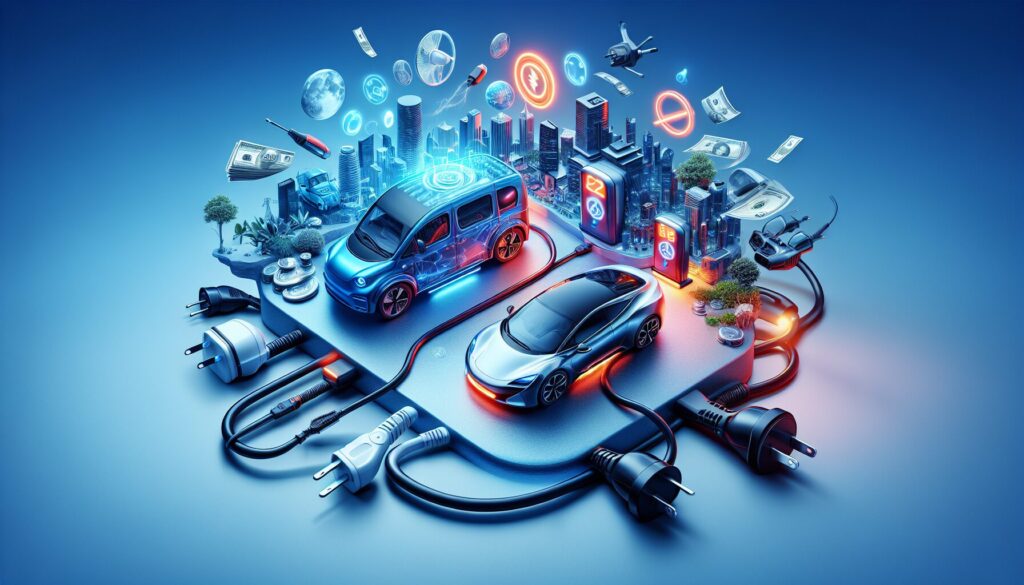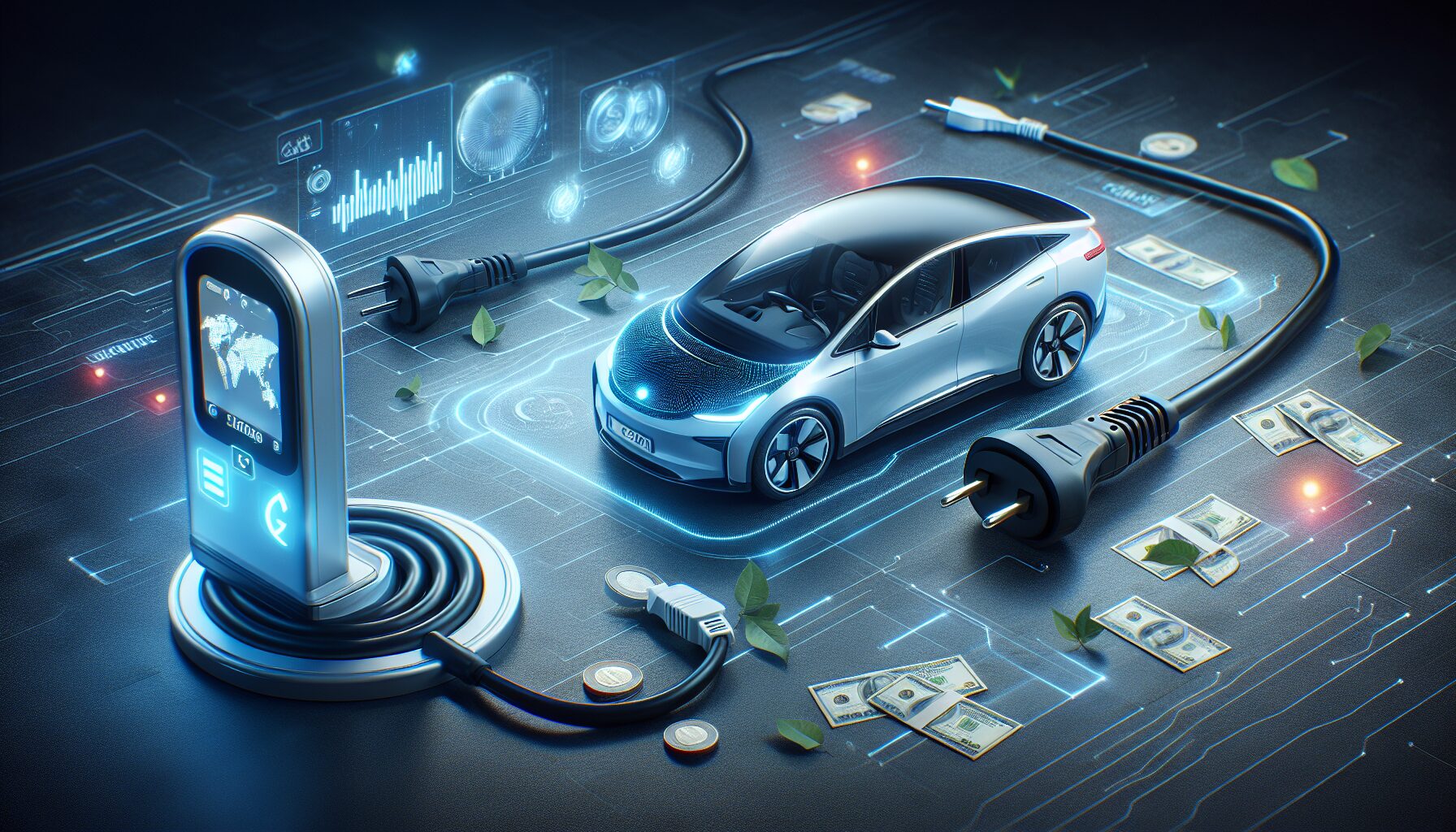Hey there, fellow Kiwis! Let’s dive into the fascinating world of electric vehicle charging. Imagine this: it’s a rainy day in Auckland, and you’re wondering whether to opt for inductive or plug-in charging for your EV. Both have their perks! Inductive charging, using resonant inductive coupling, is like magic. Your car charges wirelessly, no cables needed. It’s all about the magnetic fields. This method aligns with the SAE J2954 standard, a benchmark in wireless power transfer. On the other hand, plug-in charging, or conductive power transfer, is the tried-and-true method. You connect your car to the grid with a cable. It’s simple, reliable, and the infrastructure’s already widespread. Both options have their place, whether you’re a tech enthusiast or prefer traditional methods. Stay tuned as we explore which charging style might suit your lifestyle best!
How Inductive Charging Works
Imagine strolling through Auckland’s bustling streets, and you come across an electric vehicle (EV) parked in a spot with no visible cables. It’s probably using inductive charging! This clever technology uses resonant inductive coupling to transfer energy wirelessly from a charging pad on the ground to a receiver on the vehicle. It’s like magic, but with science! I once saw this in action at a tech expo. The car just rolled over the pad, and voilà, it started charging. No plugs, no fuss.
The magic happens through electromagnetic fields. These fields are generated by coils in both the charging pad and the vehicle. When they resonate at the same frequency, energy transfers efficiently. It’s a bit like how your wireless phone charger works, but on a much larger scale. The SAE J2954 standard ensures that these systems are safe and effective, which is super important. I mean, who wants to worry about their car not charging properly, right?
The Components that Make it Work
So, what makes up this high-tech charging system? Here’s a quick rundown:
- Primary Coil: Located in the ground pad, it generates the electromagnetic field.
- Secondary Coil: Installed in the vehicle, it receives the energy.
- Control Unit: Ensures the system operates within safety parameters.
These components work together seamlessly. In New Zealand, where EV adoption is on the rise, this tech could be a game-changer. Plus, organizations like Transpower New Zealand are exploring sustainable energy solutions. However, inductive charging is still more expensive than plug-in options. Many believe the convenience is worth it. You just park and go, which is ideal for busy lifestyles. Plus, it reduces wear on charging ports, which is a nice bonus.
Understanding Plug-in Charging

There’s something almost therapeutic about the simple act of plugging in your electric vehicle, don’t you think? Just the other day, as I was connecting my EV to the charger in my garage, I marvelled at how straightforward the entire process is. It’s all thanks to the trusty conductive coupler. This little gadget ensures a secure connection between your vehicle and the power source, making sure the electricity flows smoothly. As you can imagine, this kind of reliability is crucial, especially when you’re about to embark on a trip from Auckland to Wellington.
However, it’s not just about plugging in your car and walking away. Plug-in charging comes with its own set of considerations. Let’s delve into a few key points:
- Charging Speed: Different chargers offer varying levels of power. Level 1 chargers use a standard 240-volt outlet, while Level 2 chargers require installation and offer faster charging times.
- Location Convenience: Plug-in stations are increasingly available, but it’s wise to plan your routes. Ensure you’re aware of available stations in more remote areas.
- Cost Effectiveness: Depending on your electricity provider, charging at home can be more economical compared to using public stations.
Additionally, organizations like ChargeNet are working diligently to expand New Zealand’s charging infrastructure. This is crucial for supporting the growing number of EVs on our roads. I once read a fascinating article on Bloomberg that detailed the global push for more accessible EV charging solutions. It’s amazing how technology is shaping our future.
Now, while plug-in charging is reliable, it’s essential to weigh your options carefully. Understanding the nuances will help you decide whether to stick with the trusty plug or explore the wireless wonders of inductive charging.
Comparing Efficiency and Convenience
Ever had the chance to watch a car charge wirelessly? It’s like magic, right? I once visited a tech expo in Auckland where they showcased resonant inductive coupling. It was amazing to see how energy transferred seamlessly over the air. However, when it comes to comparing the efficiency of inductive versus plug-in charging, there are some key differences to consider.
Plug-in systems often boast higher efficiency because there’s less energy loss. This is due to the direct connection offered by the conductive coupler. Plus, it’s easier to adhere to the SAE J2954 standard for safety and performance. However, the convenience of simply driving over a charging pad without fussing with cables can’t be ignored. For those of us who’ve had to wrestle with a charging cable in the rain, the appeal is real!
Convenience Matters
Let’s talk convenience. Inductive charging’s biggest draw is its ease of use. Imagine pulling into your driveway, and your car starts charging without you lifting a finger. It’s like having an invisible valet! This is particularly advantageous in busy urban areas like Auckland, where every second counts. On the other hand, plug-in charging is widely available with networks like ChargeNet offering extensive coverage throughout New Zealand.
However, with inductive systems, alignment is crucial. A slight misalignment can affect the charging efficiency. This is where the importance of the inductive charging system comes into play. It ensures proper energy transfer, maintaining efficiency even in the face of alignment challenges.
Both systems have their merits. Your choice might hinge on whether you prioritize efficiency or convenience. Each type has its advantages, and it ultimately depends on your lifestyle and charging habits. Whether you prefer the reliable plug-in method or the futuristic feel of inductive charging, New Zealand offers options to suit every need.
Cost Implications of Each Method

My mate in Auckland recently upgraded to a snazzy electric vehicle (EV), and we had a fascinating chat about the **cost differences** between inductive and plug-in charging. He was curious about whether the convenience of inductive charging would justify the expense. It turns out, the costs can differ quite a bit depending on a few factors.
First off, the **initial installation costs** can be a bit of a shocker. If you’re eyeing inductive charging, you might need to dig a little deeper into your pocket. The setup often requires a specialized pad and a compatible vehicle, which can add up. On the other hand, plug-in chargers, like those available through ChargeNet, usually have a lower upfront cost. However, it’s not just about the initial price tag. Maintenance costs and potential upgrades could also sway your decision.
Operational Costs
When it comes to operational expenses, a lot depends on how often you charge and your local electricity rates. In New Zealand, electricity prices can vary, so it’s worth checking your provider’s rates. Plug-in systems are typically more efficient in terms of power transfer. This means they might end up saving you a bit on your monthly bill. Inductive systems, while super convenient, sometimes suffer from power transfer efficiency losses. This could mean slightly higher electricity costs over time.
Additionally, the **resonant inductive coupling** technology used in some inductive chargers can impact costs. While this tech can improve efficiency, it’s still catching on, which might affect availability and price. Ultimately, if you’re planning on sticking with plug-in charging, it might be worth considering the potential savings, especially if you have a ChargeNet station nearby.
Environmental Impact of Charging Options
When I first got into the nitty-gritty of electric vehicle charging, I was fascinated by how **inductive power transfer coils** work. They’re like the unsung heroes of wireless charging! But hey, let’s chat about something else that’s been on my mind lately—the environmental impact of these charging options. I mean, it’s something we all care about, right?
Here’s a thought that struck me during my last visit to a local EV enthusiast meet-up: How does our choice between inductive and plug-in charging affect our beautiful New Zealand environment? Well, plug-in charging stations typically require less energy to operate. They don’t lose as much energy during the transmission process, which means they’re generally more efficient. But, on the flip side, inductive charging systems have their perks. They reduce wear and tear on connectors and cables, potentially leading to less electronic waste.
Considerations for Kiwi EV Owners
For us Kiwis, it’s crucial to consider the source of our electricity. New Zealand’s electricity mix is already pretty green, with a significant portion coming from renewables. However, the energy loss during inductive charging can be a bit of a concern. Here are some points to ponder:
- Plug-in charging is generally more energy-efficient.
- Inductive systems might lead to less electronic waste over time.
- Consider the environmental impacts of your electricity source.
Lastly, organizations like ChargeNet are doing fantastic work in building sustainable charging networks across the country. Plus, the push for innovative solutions like the SAE J2954 standard is exciting. It’s all about balancing convenience with our responsibility to the environment. That balance is where the magic happens!
Conclusion
Ultimately, whether you choose the reliable plug-in charging or the innovative inductive method, each offers unique benefits tailored to your lifestyle and environmental considerations. As New Zealand continues to expand its EV infrastructure, the decision becomes a balance between efficiency, convenience, and sustainability. Embrace the journey as you explore the best charging solution for your electric vehicle. Keep driving forward, sustainably!
Continue Exploring
Unlock the secrets of modern convenience with our deep dive into inductive charging systems. Discover how this cutting-edge technology is transforming the way we power our devices, making life more seamless and efficient.
Frequently Asked Questions
What are the main differences between inductive charging and plug-in charging for electric vehicles?
Inductive charging, also known as wireless charging, uses electromagnetic fields to transfer energy between a charging pad and the vehicle, eliminating the need for cables. Plug-in charging, on the other hand, requires connecting the vehicle to a power source using a physical cable. Inductive charging offers convenience and ease of use, while plug-in charging typically provides faster charging speeds and is more widely available.
How does the efficiency of inductive charging compare to plug-in charging for electric cars?
Plug-in charging is generally more efficient than inductive charging. The physical connection in plug-in systems results in less energy loss during transmission, leading to faster charging times and lower costs. Inductive charging, while more convenient, can experience energy losses due to the distance between the charging pad and the vehicle, making it slightly less efficient.
Is inductive charging safe for electric vehicles compared to traditional plug-in methods?
Inductive charging is considered safe for electric vehicles, as it involves no physical connectors that could wear out or become damaged over time. The technology includes safety features like object detection to prevent accidental activation. However, plug-in charging is also very safe and has been tested extensively over the years. Both methods adhere to strict safety standards and regulations to ensure safe charging experiences.


Leave a Reply